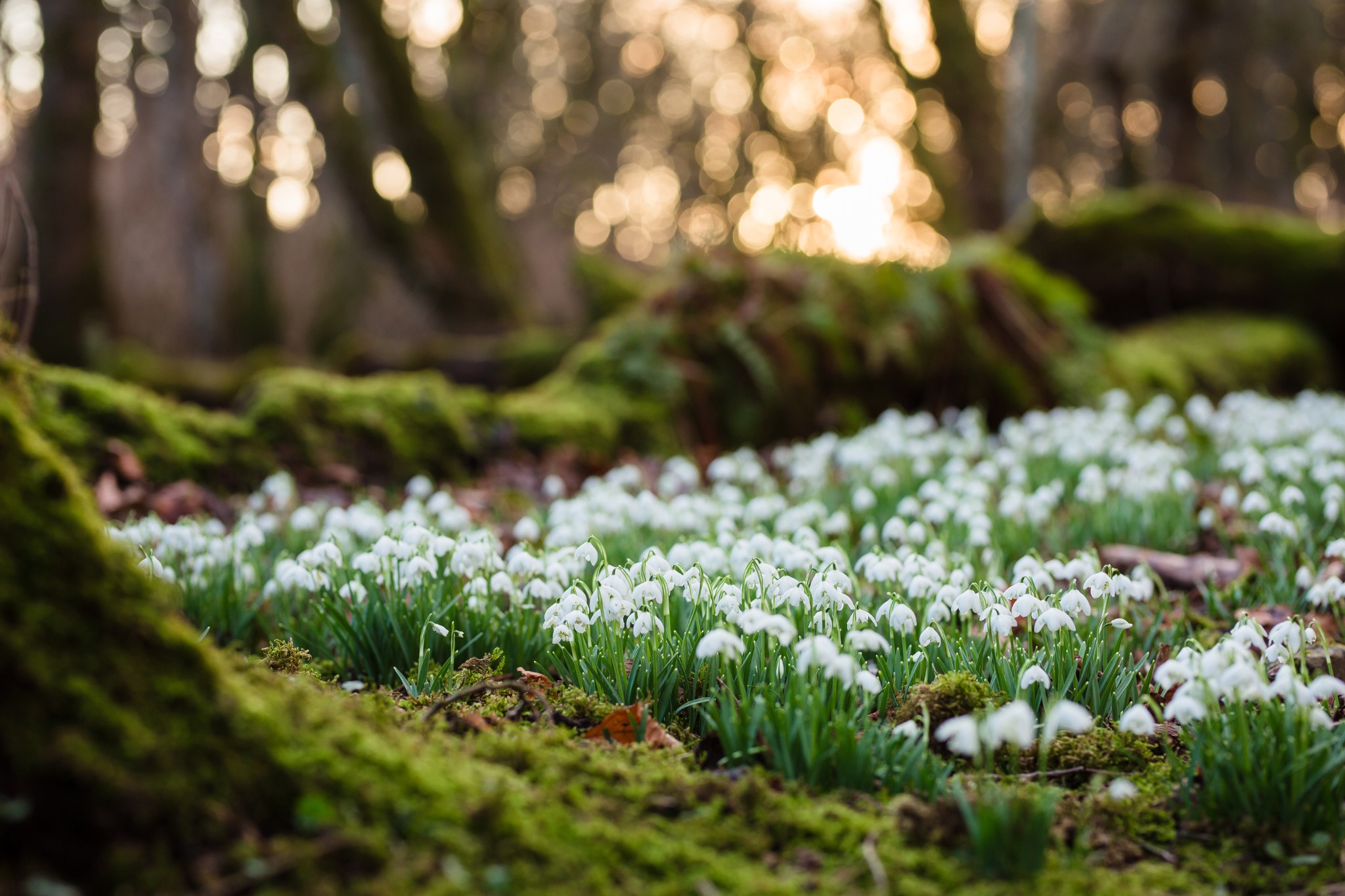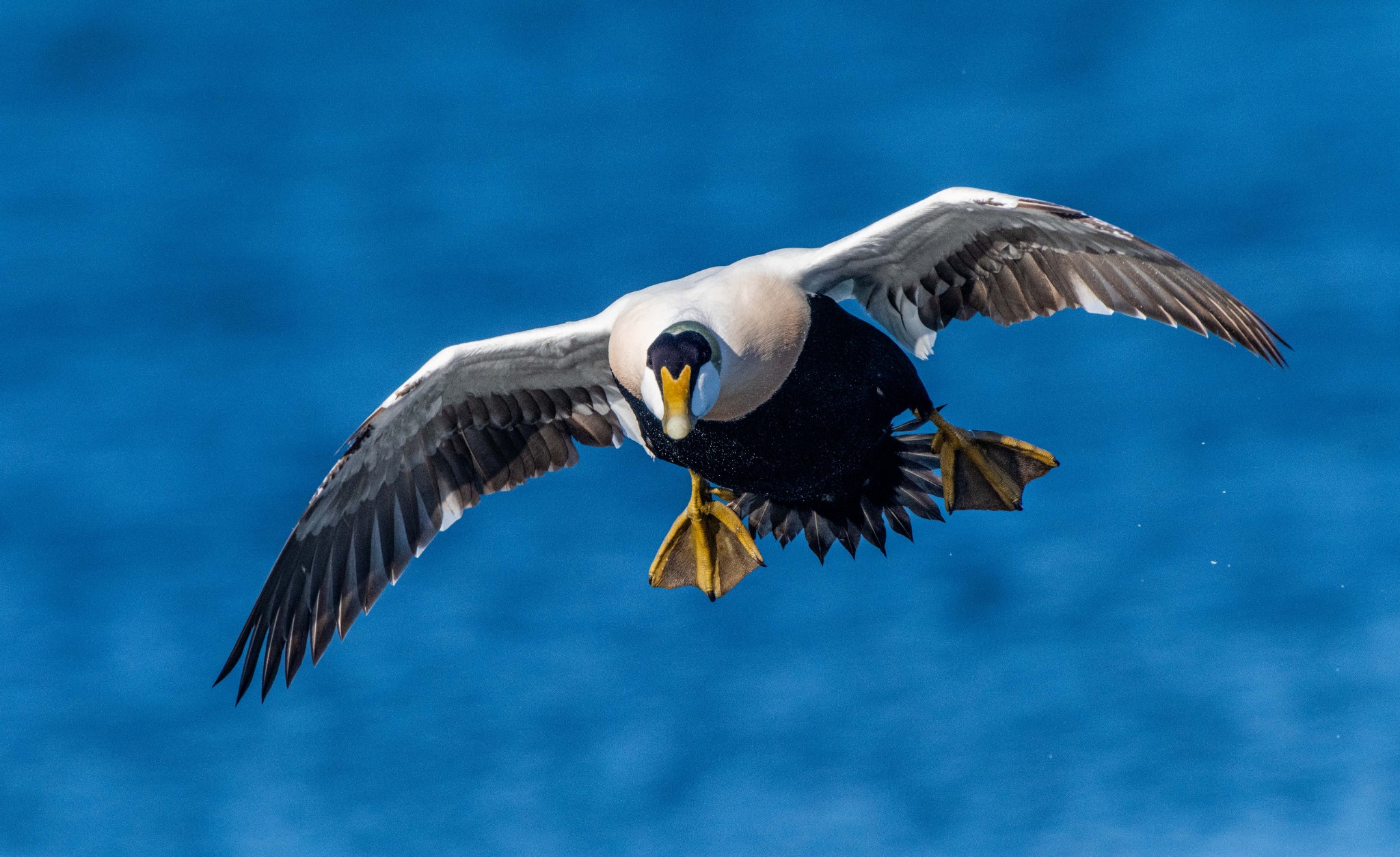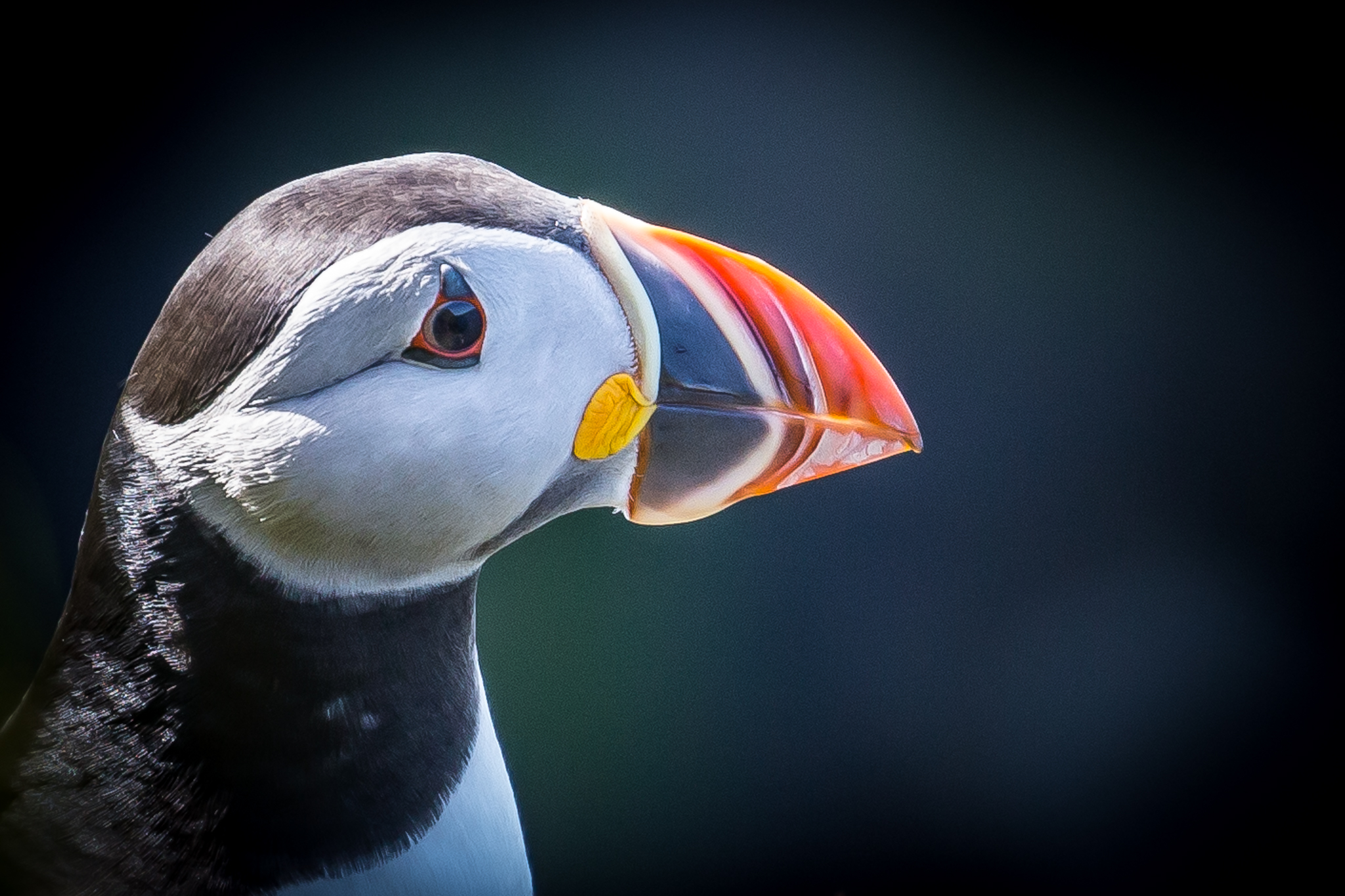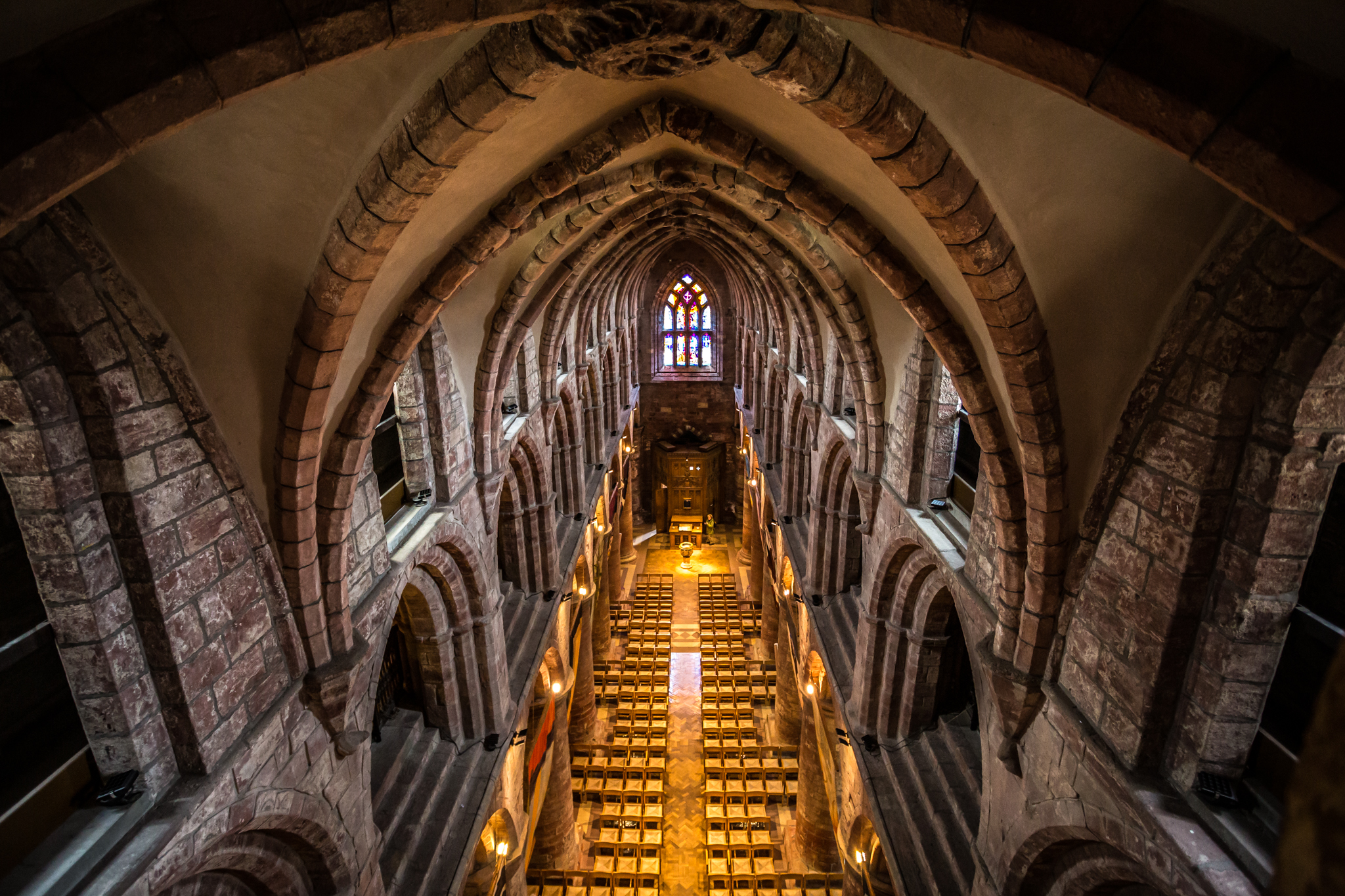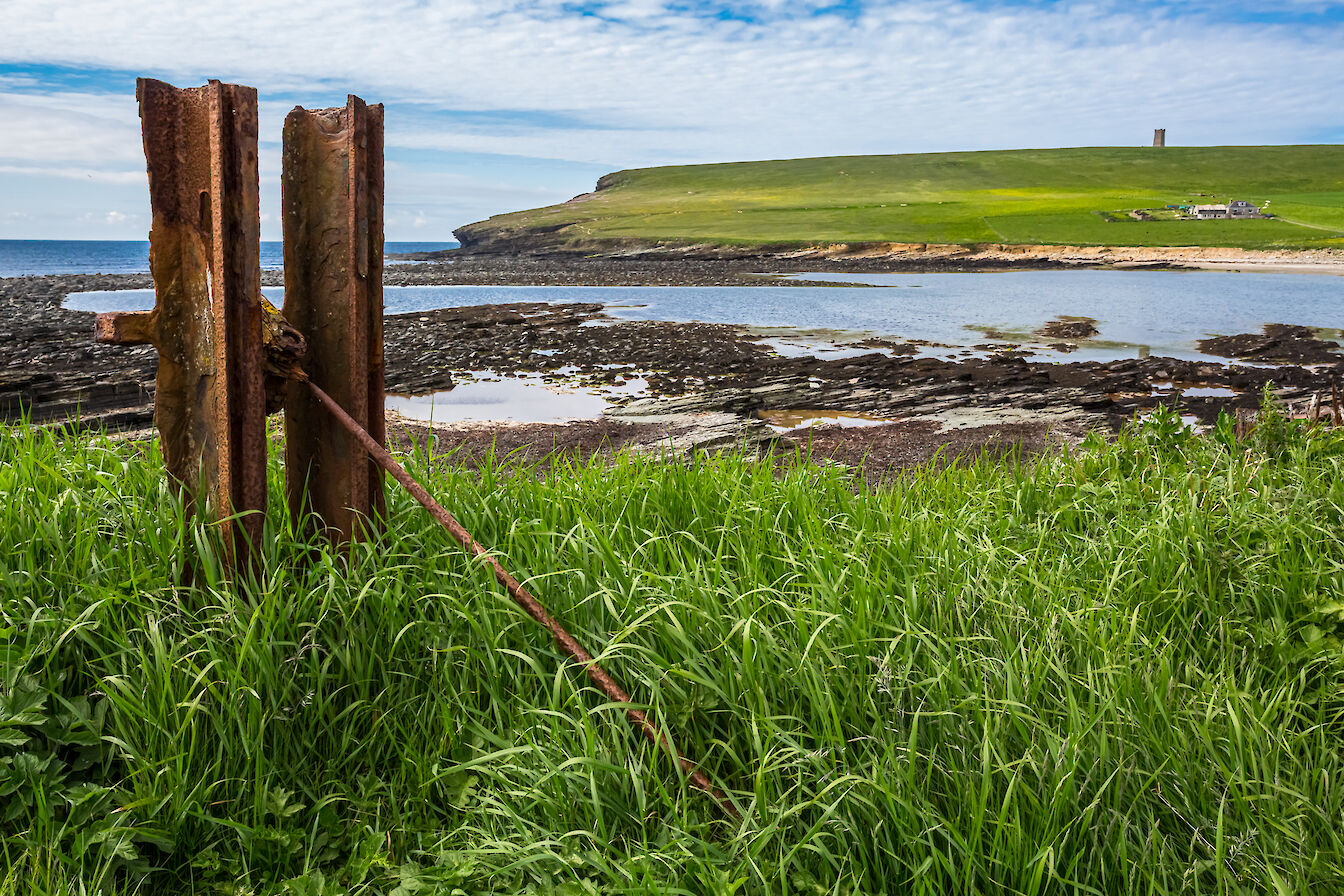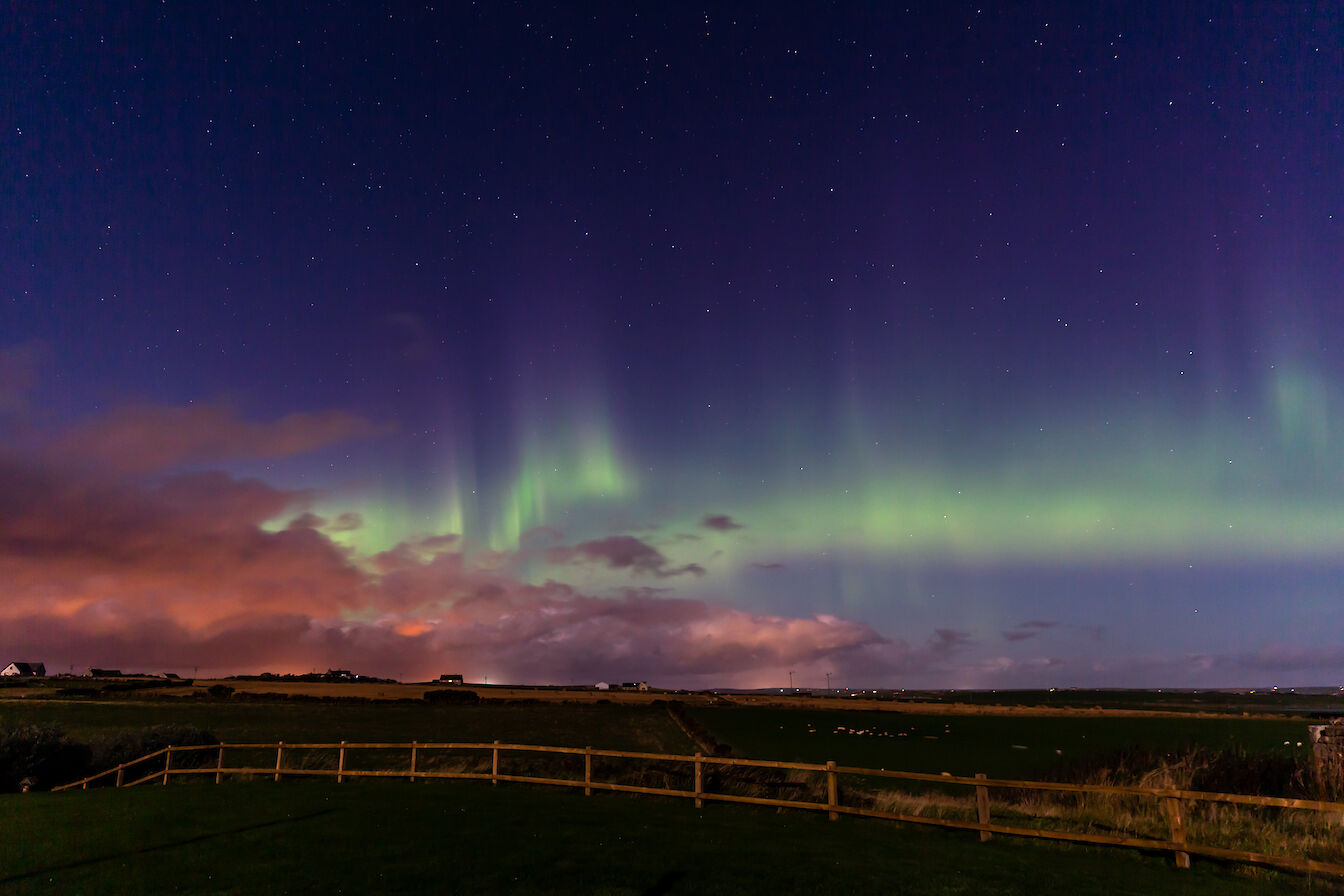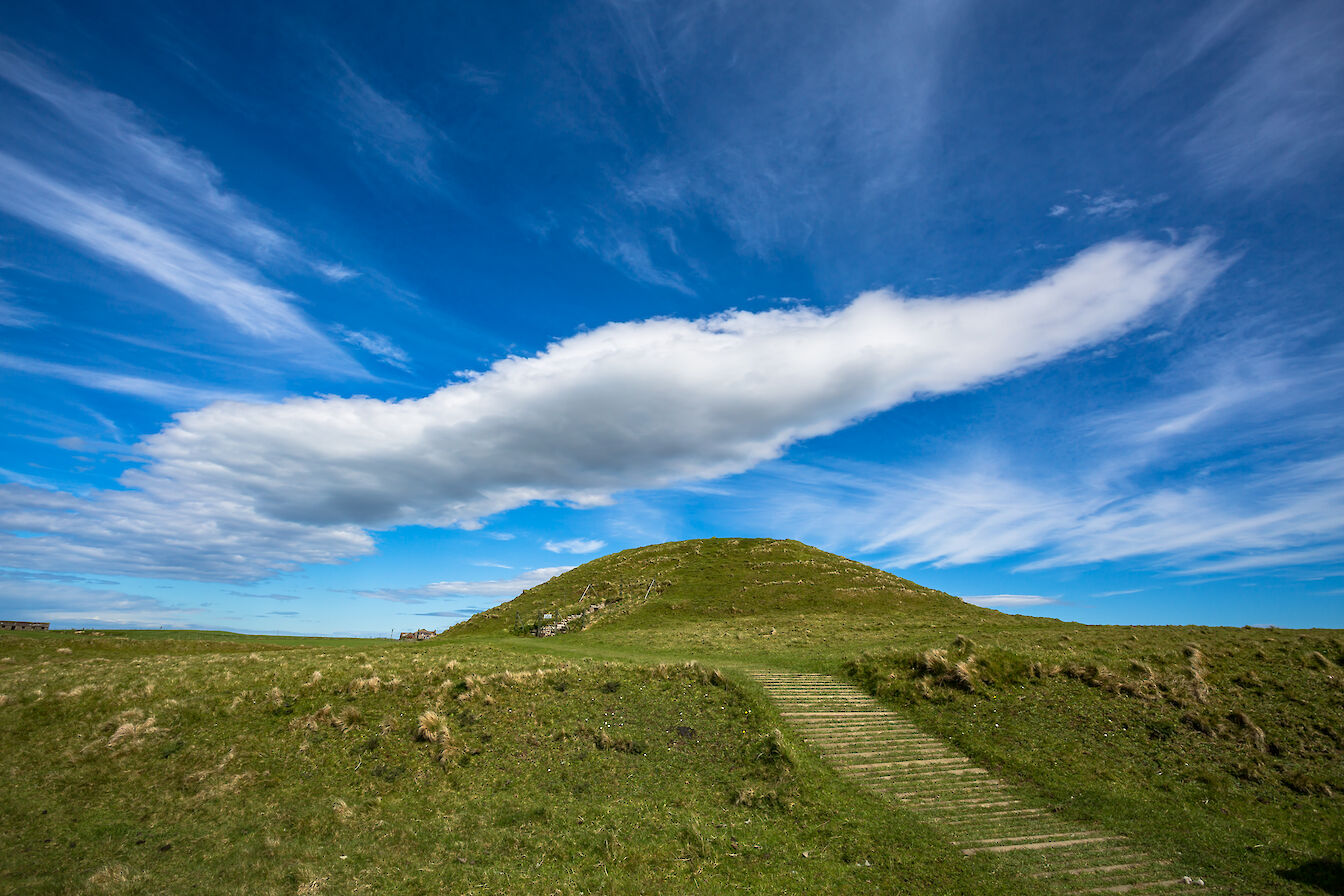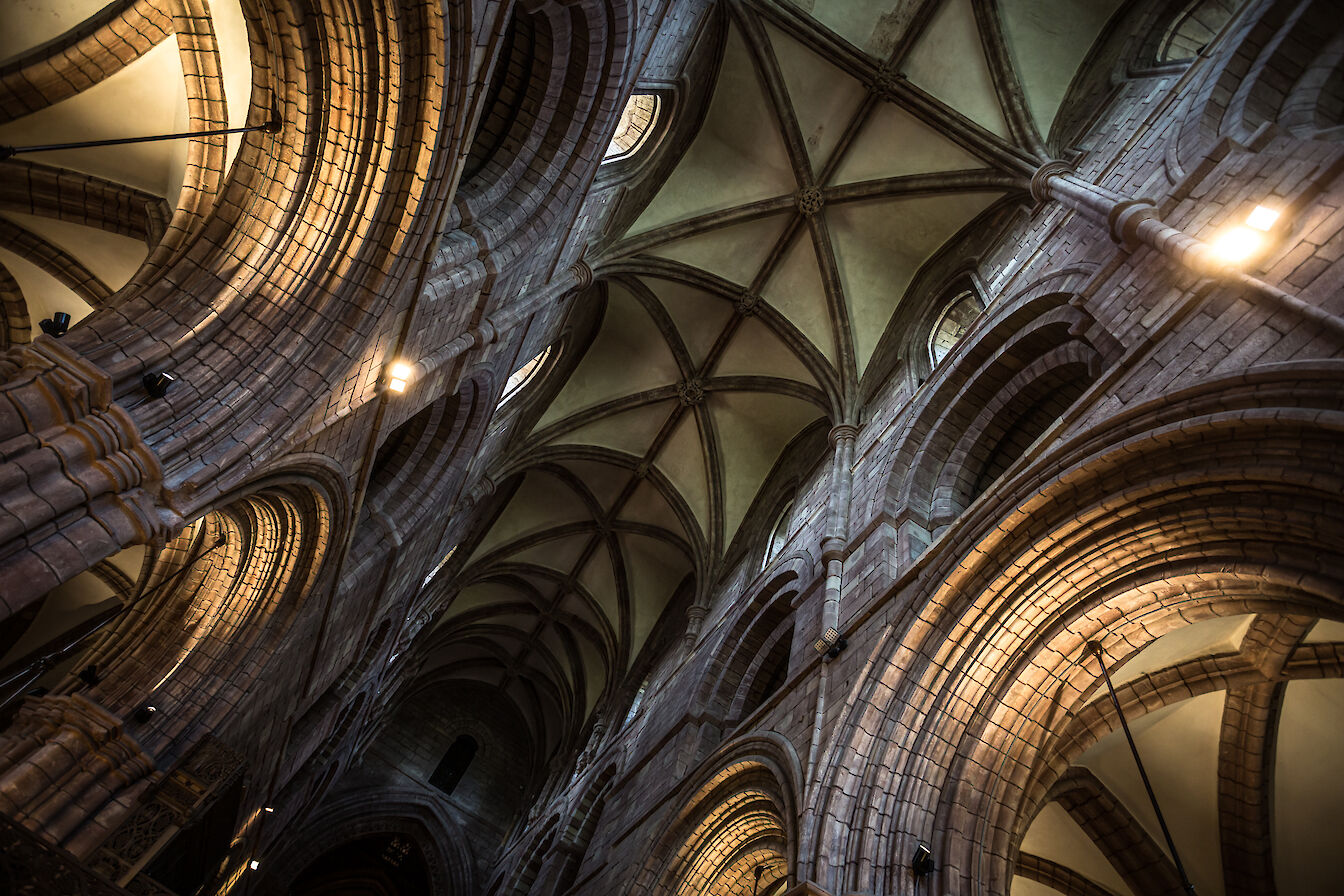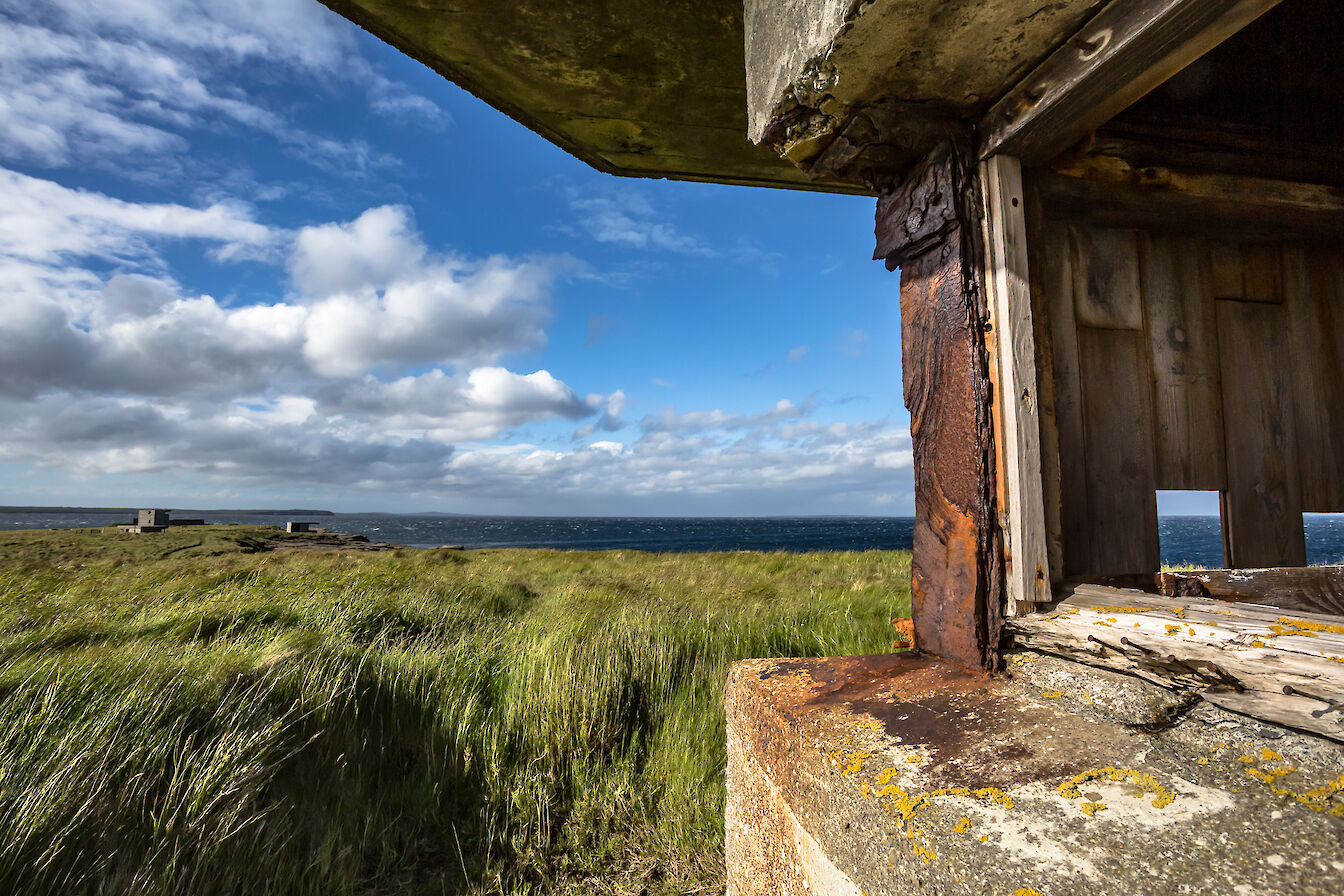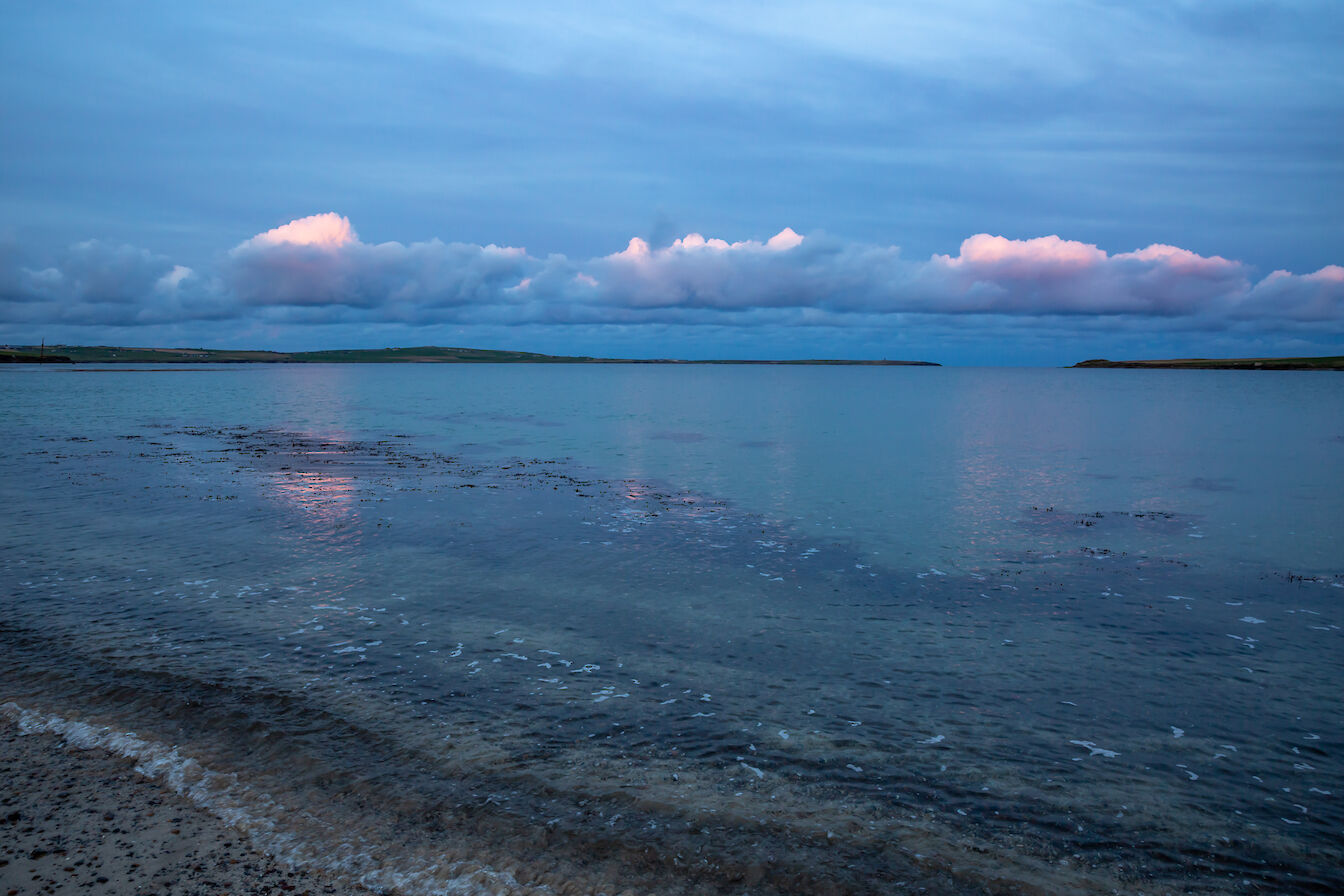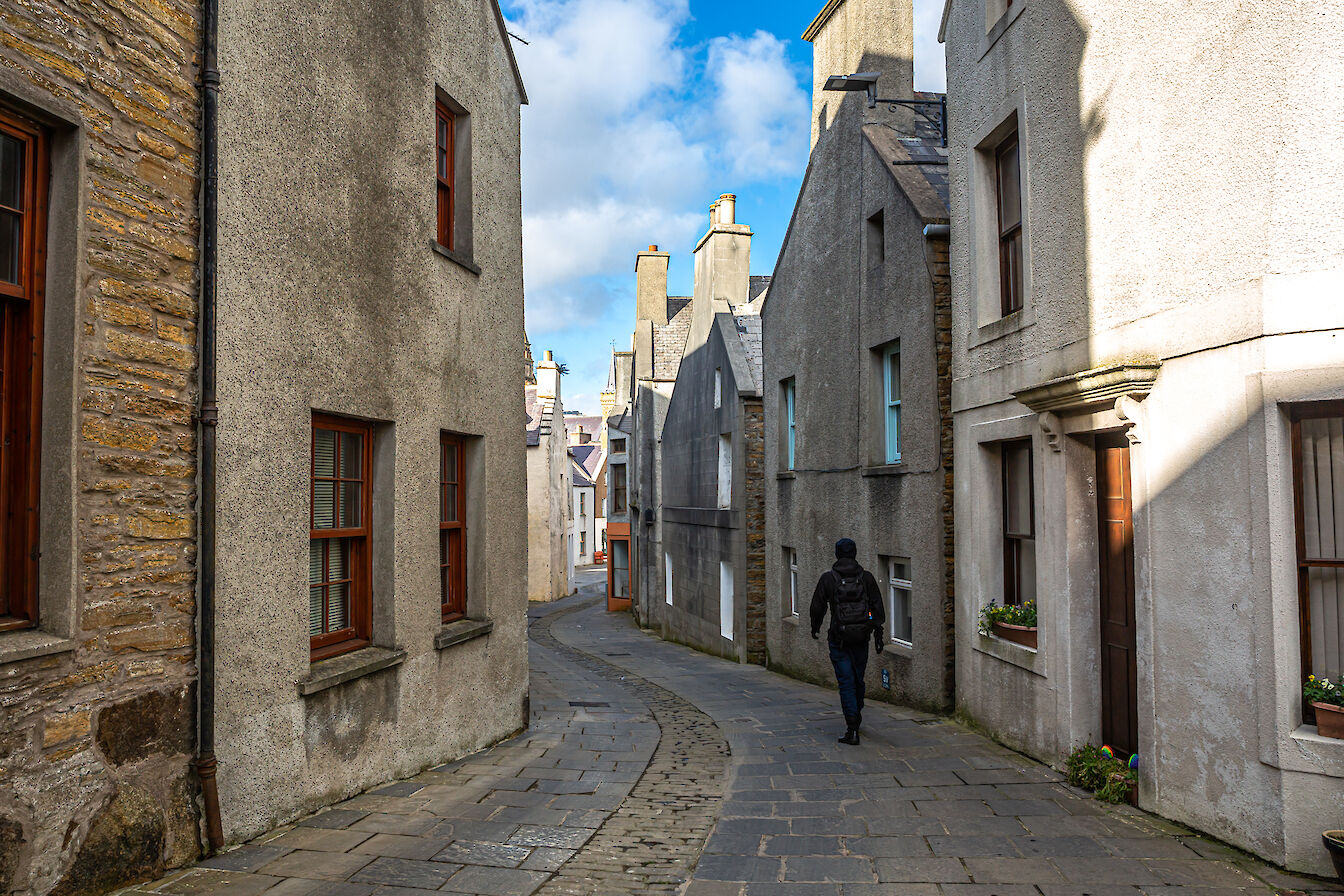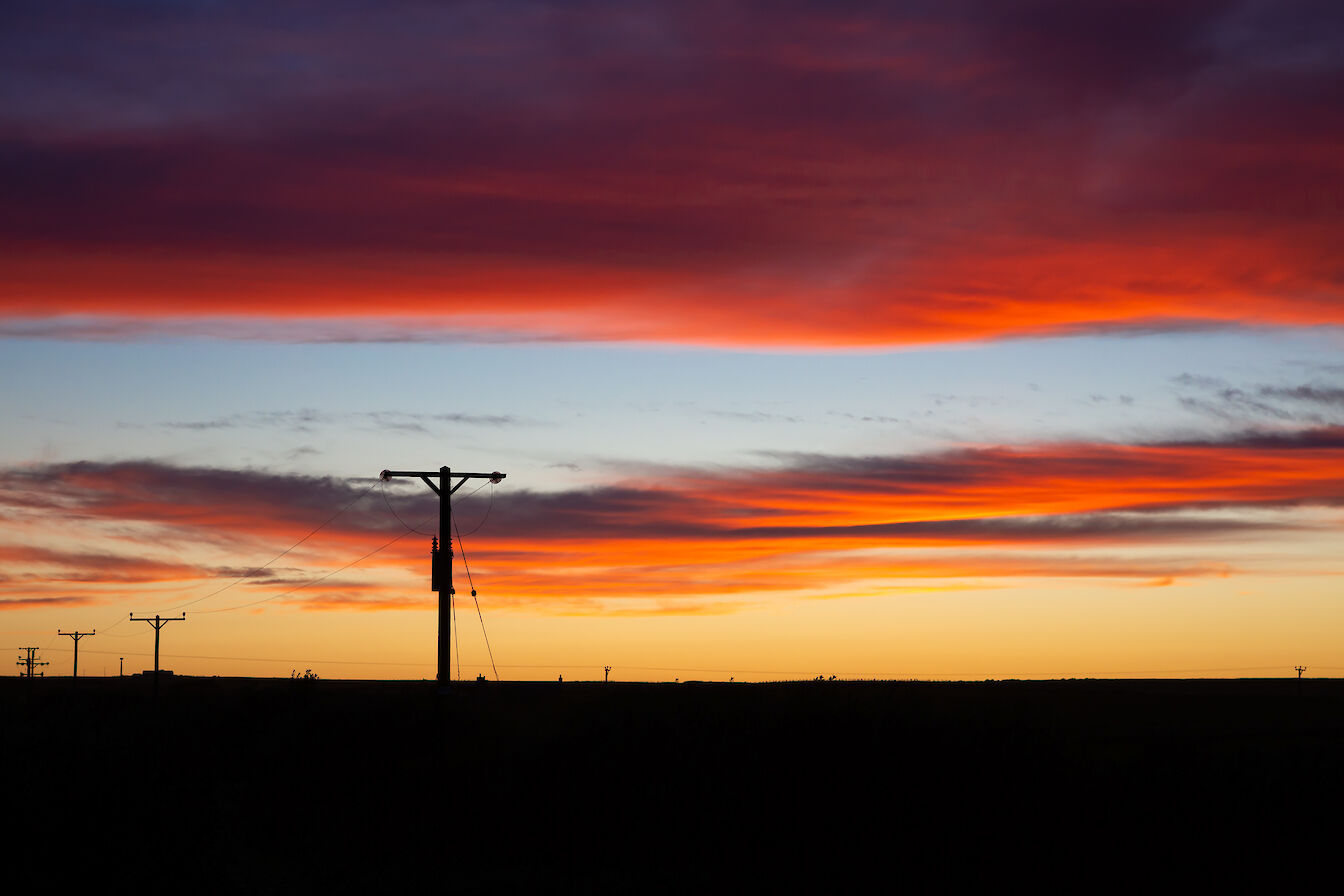Hello and welcome to the March 2021 Newsletter from Orkney.com.
Spring is coming, bringing new life, longer days and – hopefully – some optimism for the months ahead.
Although travel to Orkney is still restricted at the moment, we’ll try and bring you a sense of the islands until it’s safe to visit us once again. Remember, you can keep up-to-date with the latest COVID-19-related information on our website.
In the meantime, sit back and enjoy the latest news, features and photos from Orkney.
Latest news
Local success at renewable energy awards
 Orkney’s green energy expertise was rewarded at the Highlands & Islands Renewable Energy Awards last week, with three trophies heading home to the islands. ReFLEX Orkney claimed a double win, scooping the 'Best Onshore Renewable Energy Project' and 'Best Smart Energy/Carbon Reduction Project' categories. Green Marine was also successful, taking the title in the 'Best Marine Operator Supporting or Supplying Offshore Renewables' section. The prestigious awards ceremony was held online this year and celebrates some of the best renewable energy stories in Scotland.
Orkney’s green energy expertise was rewarded at the Highlands & Islands Renewable Energy Awards last week, with three trophies heading home to the islands. ReFLEX Orkney claimed a double win, scooping the 'Best Onshore Renewable Energy Project' and 'Best Smart Energy/Carbon Reduction Project' categories. Green Marine was also successful, taking the title in the 'Best Marine Operator Supporting or Supplying Offshore Renewables' section. The prestigious awards ceremony was held online this year and celebrates some of the best renewable energy stories in Scotland.
Bright future for island bakery
 One of Orkney’s oldest family bakery firms has moved into a new purpose-built factory in the island of Westray in a bid to boost production and meet growing UK wide demand for its traditional products. WFM Brown Ltd, which trades as The Westray Bakehouse, was established in 1892 and is run by fourth and fifth generations of the same family. It supplies bread and rolls to outlets in Orkney, but its range of biscuits has been proving increasingly popular with customers throughout the country. The new £900,000 factory project will allow the business to ramp up production, explore new opportunities in the UK market, and create vital local jobs.
One of Orkney’s oldest family bakery firms has moved into a new purpose-built factory in the island of Westray in a bid to boost production and meet growing UK wide demand for its traditional products. WFM Brown Ltd, which trades as The Westray Bakehouse, was established in 1892 and is run by fourth and fifth generations of the same family. It supplies bread and rolls to outlets in Orkney, but its range of biscuits has been proving increasingly popular with customers throughout the country. The new £900,000 factory project will allow the business to ramp up production, explore new opportunities in the UK market, and create vital local jobs.
Ortak steps in to support next generation of designers
 Community spirit is alive and well in Orkney with local designers Ortak Jewellery stepping in to support a stranded student over the last few months. Jenny McElroy is studying Silversmithing and Jewellery at Glasgow School of Art but has been unable to return to the city from her home in Orkney because of the national lockdown at Christmas. After an offer of a workbench and plenty of advice from the team at Ortak, Jenny has been learning from some of the best in the business.
Community spirit is alive and well in Orkney with local designers Ortak Jewellery stepping in to support a stranded student over the last few months. Jenny McElroy is studying Silversmithing and Jewellery at Glasgow School of Art but has been unable to return to the city from her home in Orkney because of the national lockdown at Christmas. After an offer of a workbench and plenty of advice from the team at Ortak, Jenny has been learning from some of the best in the business.
Images of Orkney to inspire the imagination
 Travel to Orkney is restricted at the moment which means anyone longing for a trip to the islands has to rely on their imagination instead. Orcadian contemporary composer Erland Cooper has spent the last few years helping people around the world get a sense of Orkney from afar through his beautiful music, inspired by the sights, sounds and the people that call this archipelago home. Now he has released a stunning series of limited-edition books featuring photography from the islands – the perfect accompaniment to his trio of Orkney-influenced albums.
Travel to Orkney is restricted at the moment which means anyone longing for a trip to the islands has to rely on their imagination instead. Orcadian contemporary composer Erland Cooper has spent the last few years helping people around the world get a sense of Orkney from afar through his beautiful music, inspired by the sights, sounds and the people that call this archipelago home. Now he has released a stunning series of limited-edition books featuring photography from the islands – the perfect accompaniment to his trio of Orkney-influenced albums.
Join us on Instagram
 Join us on Instagram where we post plenty of stunning shots from the islands. Make sure you follow Visit Orkney to see new images every week, and you can take part too. Tag your own images and use #VisitOrkney and #LoveOrkney to keep in touch.
Join us on Instagram where we post plenty of stunning shots from the islands. Make sure you follow Visit Orkney to see new images every week, and you can take part too. Tag your own images and use #VisitOrkney and #LoveOrkney to keep in touch.
Wild Orkney
Orcadian wildlife filmmaker Raymond Besant has been out exploring some of his favourite island haunts once again. This month, join him for a guide on how to take the perfect wildlife images.
One of the great things about wildlife photography is the sheer range and number of subjects there are to make images of. We naturally lean to those things we like or have a passion for. It’s a bit like at school where I generally tried harder at the subjects I was interested in!
Birds, mammals, plants and flowers, insects, amphibians, fish. There are specialists in all these fields of photography and whilst I’ve always had a keen interest in birds, I enjoy photographing all of them - though they all invariably carry their own challenges. Keeping up with an orca as it swims quickly through Scapa Flow and choosing a spot such as Hoxa as a best guess as to where it might be photographable is completely different of course from photographing a plant, where you are much more in control of the situation.
So, I thought I would touch upon a technique for which there is plenty of scope in Orkney with plenty of subjects on which to practice - super telephoto photography. It can be challenging at times and you’re probably more likely to notice how good or bad technique impacts the quality of your images!
I don’t have a cut off point for when telephoto becomes super telephoto though back when the choice of lenses was far fewer even a 70-200mm lens was considered a ‘pretty good telephoto lens’. Roughly our eyes see at around 50mm, which is perhaps why this lens is sometimes called a ‘standard’ lens. Logic should follow that anything lower than 50mm is wide angle, or simply gives a wider perspective of a view and anything above 50mm is telephoto.
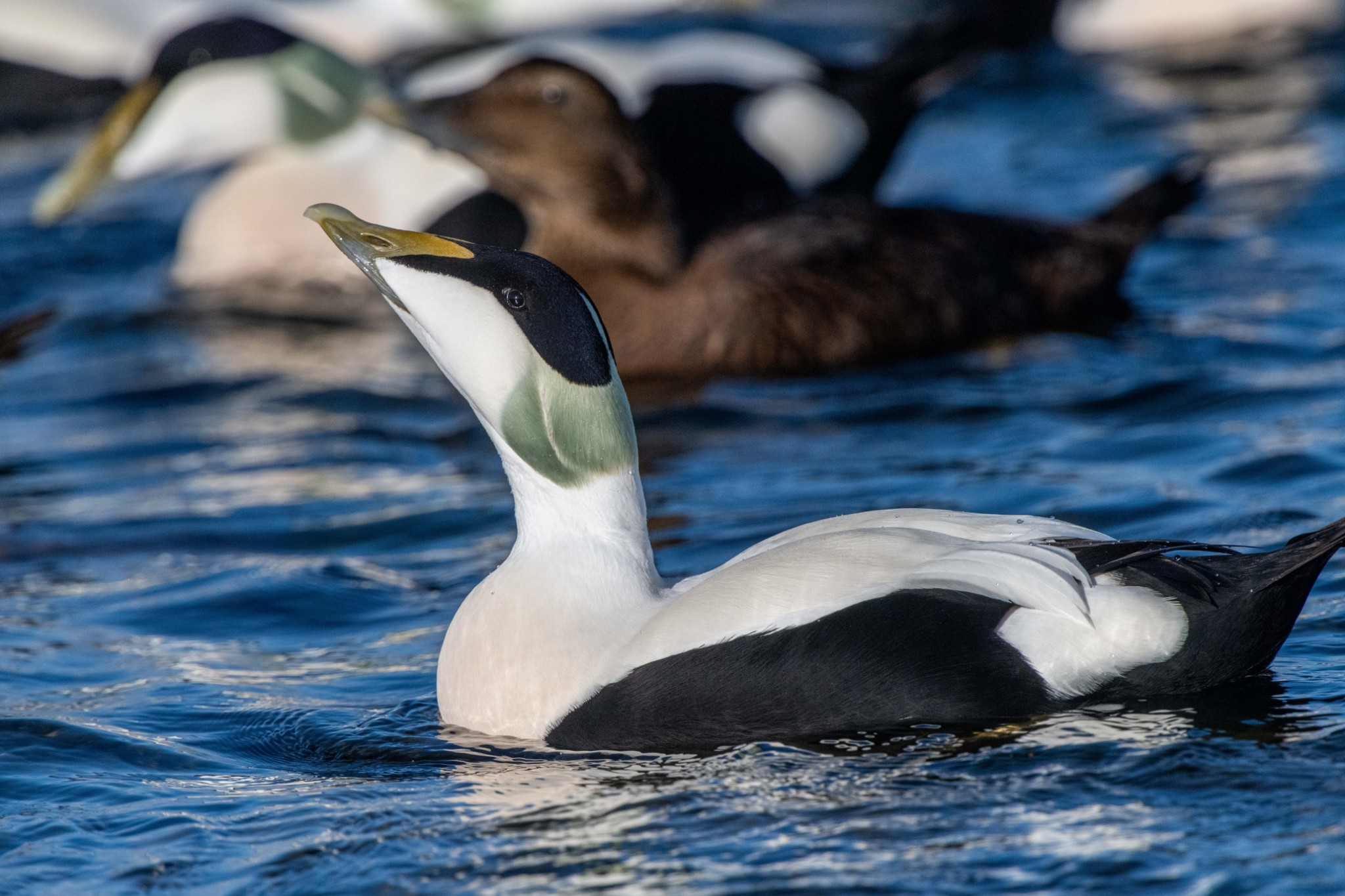
In the realms of wildlife photography and for more distant subjects then really 300mm should be thought of as a minimum focal length. My go-to lens is a ‘fast’ (as in the aperture is wide, e.g. f4) 500mm lens and in the right conditions I’ll use a teleconverter which increases the magnitude of magnification by usually 1.4x, 1.7x or 2x. So, with a 2x teleconverter, or simply ‘converter’, my 500mm lens becomes a 1000mm lens.
‘Amazing!’, you’re thinking, but with this gift comes several drawbacks. Firstly, the teleconverter is optical and so has glass elements through which your light must pass to reach the camera’s sensor. The focal length might have been doubled but unfortunately this means the maximum aperture with which you can shoot is also doubled. So, my once ‘fast’ lens at f4 is now reduced to working at f8 or lower. What this means now is my shutter speed will be slower and at these extreme focal lengths the chances of the dreaded camera shake are that much higher.
Nothing ever works in isolation in photography. Change one setting on your camera and it affects another. The solution to this slower shutter speed when you can’t increase your aperture? Increase your ISO, but not too far as grain or ‘noise’ as it’s called in a digital context will become an issue. This is where knowing your camera inside out really helps. I use Nikon cameras but the information here is pertinent to any camera model. I have several different Nikon camera bodies all with differing sensitivities in relation to how the sensor deals with ‘noise’, some very good, some not so good. However, on most modern cameras, in the right conditions, pushing your ISO to 3200 and some careful post-processing shouldn’t pose too many problems.
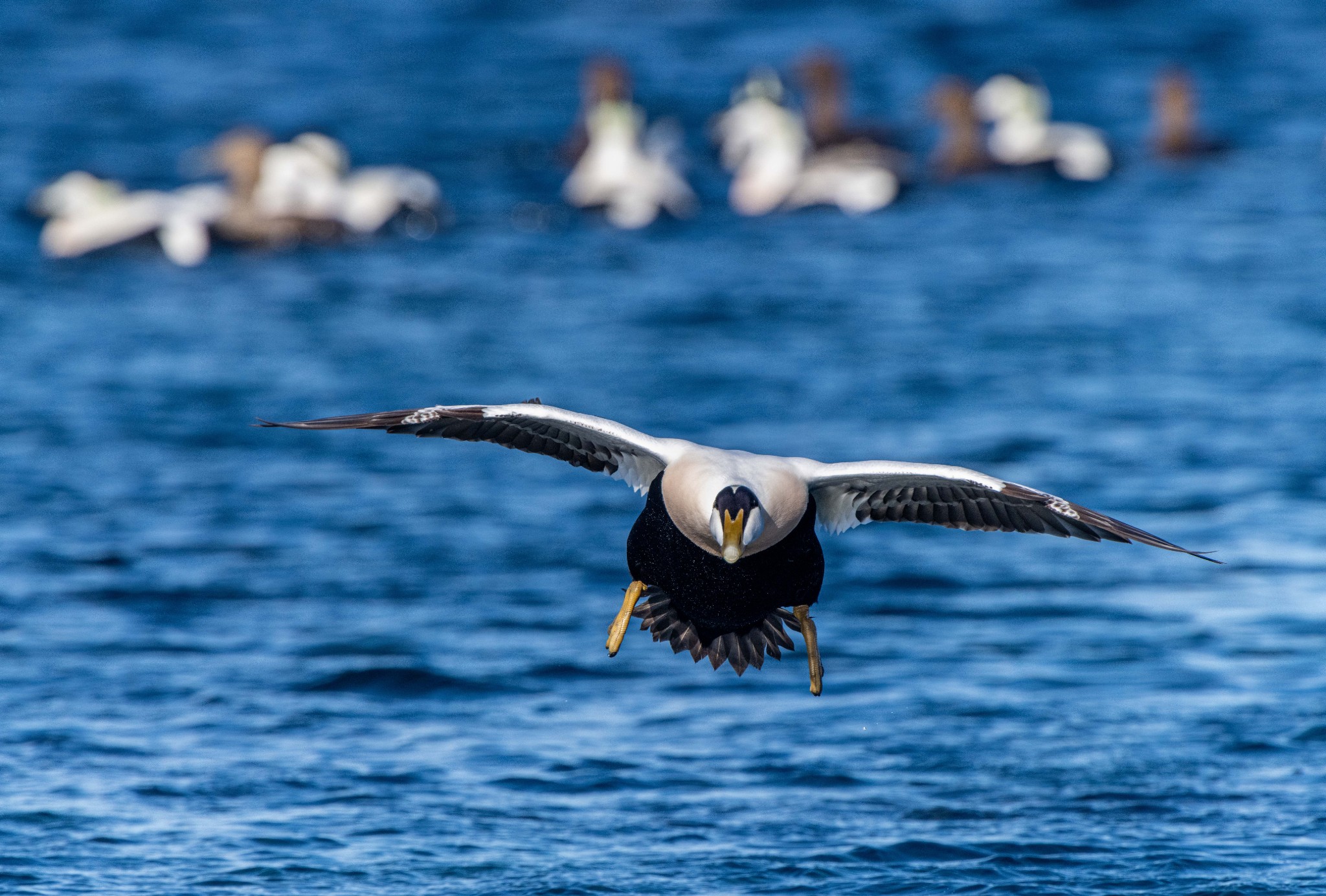
The key words I’ve used here though are ‘the right conditions’. I had just such an opportunity recently to really push my camera and lens by photographing some eider ducks. Not much of a challenge you might think, but the challenge was to photograph them in flight, not sitting loafing on the surface of the sea.
I’ll hold my hands up, I have some good tools to begin with. My main camera is the Nikon D850 which has a very good autofocus system and, combined with the 500mm f4 Nikon lens, I have a good chance of the flying eiders being in focus. So, I added the 2x converter which really tested the autofocus system. But what I also had going in my favour was light, and lots of it. Ordinarily I would shy away from very strong sunlight but even using the 2x converter in sunshine I can easily work with a shutter speed over 1/1000th of a second, even up to 4 or 5000th of a second, more than enough to render the wing tips of a flying bird sharp if I manage to get it in focus! Add a teleconverter in dull or poor light and you’ll really see the autofocus system struggle, hunting back and forth all the time.
There are one or two more technical aspects to take into account to give yourself the best possible chance of success. More than likely your camera will give you the option of whether you want to be in ‘focus priority’ or ‘release priority’. You’ll find it in one of your menus and it does exactly what it says. In ‘focus priority’, your camera will only take a picture when it is definitely in focus. ‘Release priority’ will take a picture when you depress the shutter regardless of whether the image is completely in focus or not. For photographing the eiders I’m going to use release priority and hope that the success rate is higher than the failure rate!
This brings me neatly onto the focus modes in your camera (I promise we will start taking pictures soon!) and this I must confess is when things can really get a bit confusing. I’ll list the focus modes on my D850 to give you an idea. In AF-S mode, the ’S’ stands for single and in practice this means you press the shutter half way, the camera focuses and you take a picture. To re-focus, you need to press the shutter button half way again. It’s great for static subjects or those where you want a very fine pinpoint on which to focus. But, even in AF-S, I have the option of AFS (S), GRP and Auto settings.
Then comes AF-C, or continuous autofocus, which is exactly what it does, continuously focusing until you press the shutter all the way down to take a picture. Now, bear with me, these are my potions. AFC (S), d9, d25, d72, d153, Auto and 3D. Where on earth do you start and which is best for what? That’s a whole article in itself!
So, I’ll just discuss my eider settings. 3D focusing can be very good, the camera actually predicts where it thinks your subject will go. The trick is to help it find the subject by half pressing the shutter as you would normally, but once it’s locked on resist the temptation to keep pressing the shutter half way until you are ready to take a picture as the 3D autofocusing is doing the job for you.
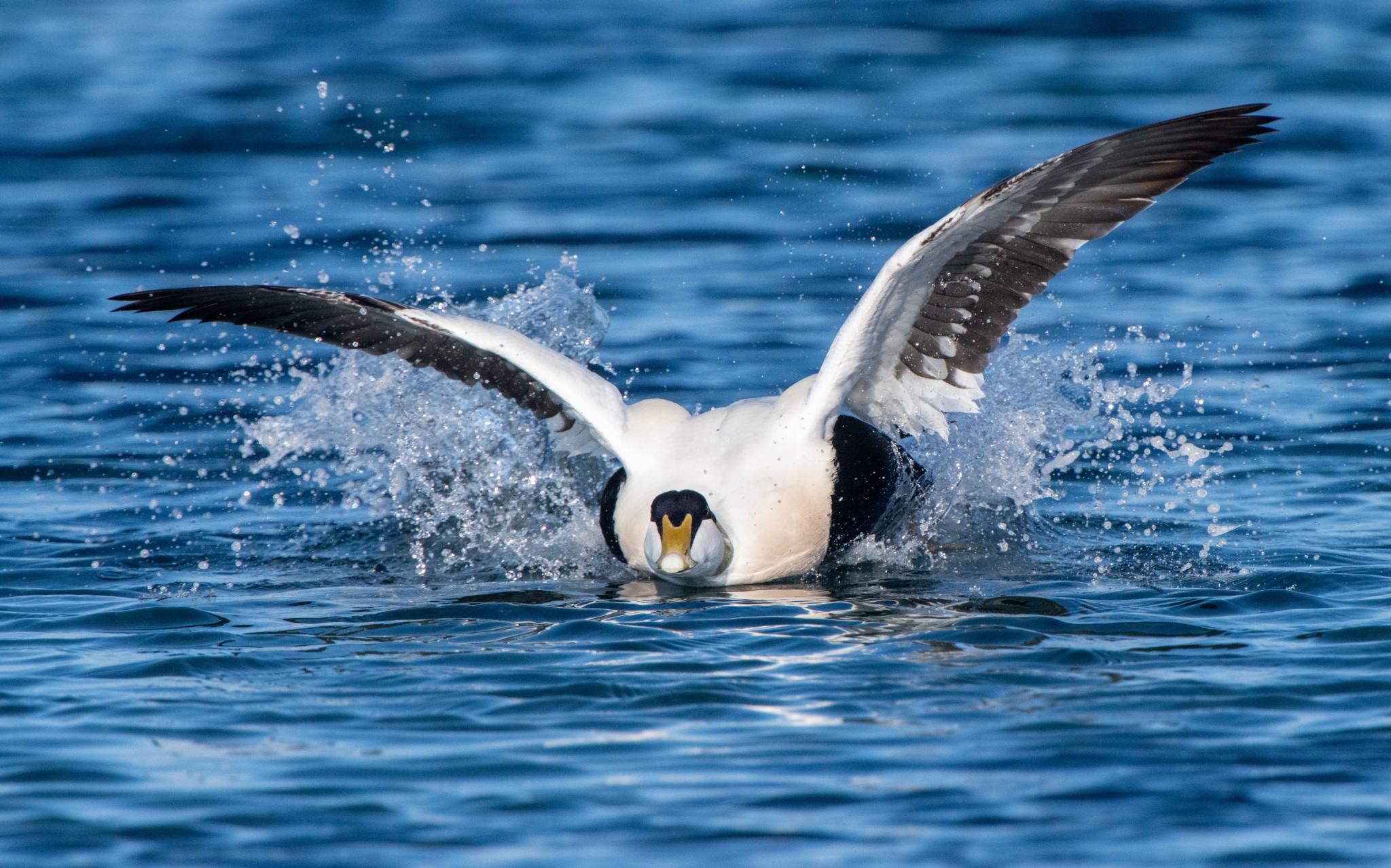
But, because I’m also using a teleconverter, the camera won’t allow me to use the 3D system as the main lens must be connected directly to the camera for it to work. So, instead I’ve set my focus system to AF-C d25. The numbers relate to how many ‘squares’ or what area of the frame is being used to track your subject. D9 is a bit too specific, d153 not specific enough!
I’m sat on the shore and I’ve been watching a large group of eiders flow back and forth from very near the shore to 100 meters offshore. They are making their characteristic ‘oo-ooohh’-ing noise and displaying with some vigour. My heavy lens is on a tripod and I can see more eiders flying in low over the surface to join the group. I’ve got my camera set to C (High) so I can fire off seven frames per second.
The autofocus works surprisingly well. It's easier to focus on a bird mid-distance and allow the camera to track it. But here is where you have to resist your urge to fire off loads of pictures; the birds are still too far away, albeit in focus. However, the closer the birds get the harder the camera is working and so your chances of successful in-focus birds are getting smaller and smaller! Just as I start firing, the birds change tack and I lose them. Try again, track and I’m in focus, closer, closer, closer…press the shutter. Don’t forget to move with the birds! Keep firing!
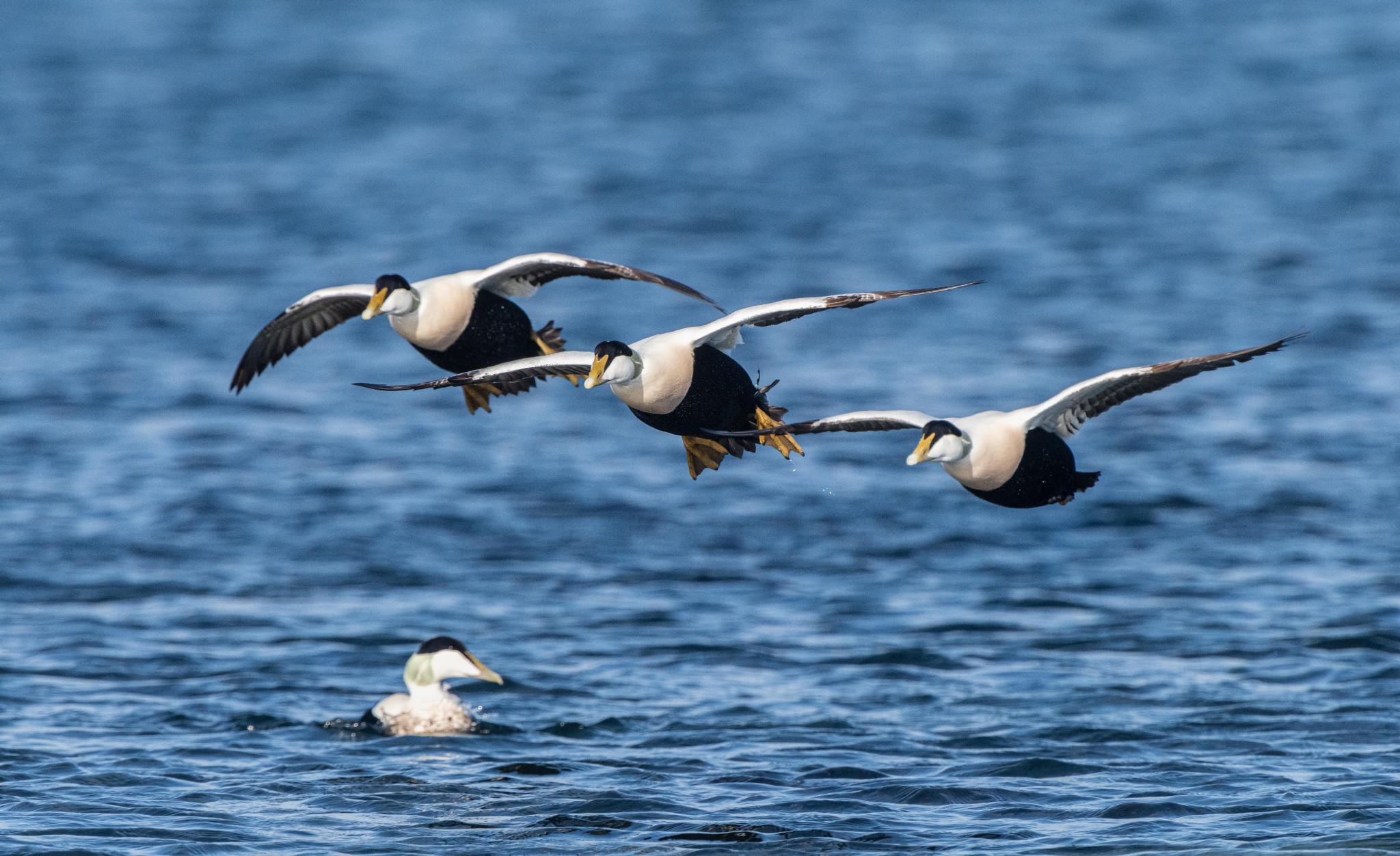
I realise I can’t move quickly enough on the tripod. So, I’m handholding, my shutter speed is high enough to avoid camera shake (1/3200th sec) and I swing around quickly and smoothly as the birds wheel around. I do this for as long as my biceps can handle it! Why is this more than a technical challenge? Because the eider duck is the fastest flying bird in the world in steady level flight (the peregrine is gravity-assisted), clocked at over 47mph!
With a small wing to weight ratio, it has to fly fast to keep its considerable bulk in the air. They come and go, come and go, affording me lots of opportunity to get it right, and wrong. It’s tricky work and there will be lots of failures but that’s ok.
Then, once you’ve mastered the technical, you can delight in the natural.
Find out more about Raymond’s work via his official website. You can also find him on Facebook, Twitter and Instagram.
His new book, 'Naturally Orkney Volume 2' is out now, focusing on Orkney's coastline and all the sights and species that can be found there. You can order your copy online.
Focus on photography
Our featured Orkney photographer of the month, Dawn Underhill, might not be based in Orkney, but her Orcadian roots run deep and her imagery keeps her connected to the islands.
I inherited my love of photography from my father. As a child I would spend hours looking at his photo albums. I was especially fascinated by the images he’d captured during his National Service, which had taken him from his native Orkney to Egypt.
My first camera, at the age of ten, was a Kodak Instamatic. For years I used photography as a means to record life events and memories. It wasn’t until 2005, when I owned my first Canon DSLR, it became more than a visual diary. Digital format gave scope for experimentation and creativity. A desire to improve and understand the technical aspects of photography emerged a few years ago; I realised that knowledge underpins ability and is reflected in the results. I still have much to learn, but am enjoying a greater understanding of my hobby. I’ve come to recognise how therapeutic capturing images can be, not least because being surrounded by nature is food for the soul.
I currently use a Canon EOS 5D Mark III with various Canon lenses. My favoured 17-40mm suits my passion for shooting landscapes. On visits to Orkney, I enjoy puffin photography at Birsay or Westray, where a telephoto is essential. In September 2020, I experienced my first sighting of the aurora borealis in South Ronaldsay. I was delighted to capture some decent images, despite having had no previous experience of long exposure night shoots.
There is much to inspire from Orkney’s beautiful land and seascapes, to the amazing wealth of wildlife. Favourite coastal walks of mine, including Yesnaby, Skaill, and Mull Head, offer wonderful views of geos and sea stacks. Orkney’s rich heritage provides vast inspiration for the photographer.
The iconic St Magnus Cathedral has incredible architecture; the guided Upper Levels Tour provides unique perspectives for images. Recently I developed a keen interest in wartime history, with Hoxa and Rerwick Head being amongst my favourite sites. I’d recommend visiting the other isles, each has individual charm. I particularly love Stronsay, my father’s birthplace. After decades exploring the islands, I’m still discovering captivating locations.
Orkney is a visual feast - the boundless skies, rugged coastlines, and historic sites combine to ignite photographic inspiration. The ever-changing weather can pose a challenge for photographers, but it can provide the most spectacular backdrops! Returning to Orkney to capture its beauty remains the highlight of my year.
You can see more of Dawn's images on her Instagram account.
And finally...
Thank you for taking the time to read our latest newsletter. Hopefully it has helped keep Orkney in your minds until you can visit us once again.
We’re always keen to hear from you too - share your news, views and comments on the newsletter, Orkney.com and your Orkney experiences with us on Facebook, Twitter, Instagram or E-mail.
In the meantime, it's cheerio from Orkney for now.
The Promoting Orkney project has been part financed by the Scottish Government and the European Community Orkney LEADER 2014-2020 Programme.
